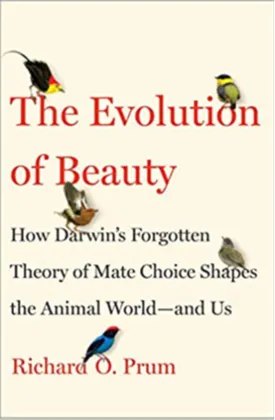The Evolution of Beauty: How Darwin's Forgotten Theory of Mate Choice Shapes the Animal World - and Us by Richard Prum
Richard Prum's The Evolution of Beauty: How Darwin's Forgotten Theory of Mate Choice Shapes the Animal World - and Us, dives into a vibrant exploration of the subjective nature of beauty and its evolutionary implications across the animal kingdom. Prum seeks to shift the accepted narrative of Darwin's theory of evolution by natural selection, exploring colors, shapes, and behaviors that have played a significant roles throughout the evolutionary landscape.
Prum frames his exploration around the concept of Darwin’s forgotten theory of “True Mate Choice,” contrasting it with the accepted notion of “Sexual Selection,” by which the characteristics of any given species are determined by those members more successful in competing for reproduction rights. Reinterpreting Darwin’s work with meticulous research and an engaging writing style, Prum argues that female choice, rather than male competition, has played a larger role in determining the anatomy, behavior, and even courtship behaviors of animals across the evolutionary spectrum.
The Evolution of Beauty begins with an analysis of the physical beauty and courtship displays of birds, examining the ways in which females of the species arrive at the choice of mate, regardless of the male’s fighting ability or success in the competition for reproduction rights. Prum argues that female birds have their own aesthetic preferences in the physical characteristics of potential mates, at odds with the assertion that beauty was determined by the strategy of who could fight the best. Drawing upon everything from theoretical ecology to behavioral genetics, Prum delves into the intricate behaviors and markings of birds to support his claim.
From there, Prum expands his scope to examine the wider animal kingdom, looking all the way from the dermal tubercles of a coral reef fish to the courtship dances of a prairie chicken, the vibrant plumage of songbirds from the Serengeti, and the primate beauty contests of the deep jungles of East Africa. Throughout his exploration, Prum illustrates how generations of selection for beauty, rather than for competitive “fitness,” has shaped the survival of animals over hundreds of thousands of years.
To Prum, the implications of this theory go far beyond the animal kingdom, touching on our own understanding of beauty, human reproduction and how we construct our relationships. To make his point, Prum turns to a study of the mating strategies found in many human societies, where phenomena such as color preferences, fashion, even social media itself, are sculpted by females seeking out those mates whose appearance will give the most advantages to their offspring.
In The Evolution of Beauty, Richard Prum has written an engaging, thought-provoking study of the concept of beauty, and how it has played an intricate role within the greater evolutionary landscape. By taking a look at both the animal kingdom and ourselves, Prum’s book offers an eye-opening journey into the scientific basis of beauty and its importance in the continuity of life.

